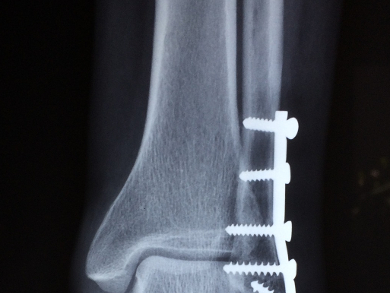Bone implants can often cause infections. These infections are caused by bacterial biofilms that develop on the implants. They are very difficult to eradicate with antibiotics or by the immune system. This leads to a need for further surgeries and invasive treatments.
Shuilin Wu, Hubei University, Wuhan, China, and Tianjin University, China, and colleagues have developed a red-phosphorus-based coating for titanium bone implants that can eradicate biofilms under near-infrared (NIR) light. The team used chemical vapor deposition (CVD) to deposit red phosphorus on a titanium surface. The NIR photosensitizer IR780 was then immobilized on the red phosphorus film. This was followed by another surface modification with polydopamine (PDA) to improve the photoconversion efficiency and, finally, by a Michael addition of arginine–glycine–aspartic-acid–cysteine to improve the adhesion of bone cells on the material.
The NIR light used to heat up and activate the coating can penetrate tissue, which allows for a non-invasive photothermal therapy. The induced heat produces safe temperatures of below 50 °C and the IR780 produces singlet oxygen under these conditions, which helps to kill bacteria. The red phophorus improves NIR absorption and is biocompatible and non-toxic. According to the researchers, the coating can reach an antibacterial efficiency of 96 % after 10 minutes of near-infrared irradiation in rats carrying implants infected with Staphylococcus aureus biofilms.
- Rapid Biofilm Eradication on Bone Implants Using Red Phosphorus and Near-Infrared Light,
Lei Tan, Jun Li, Xiangmei Liu, Zhenduo Cui, Xianjin Yang, Shengli Zhu, Zhaoyang Li, Xubo Yuan, Yufeng Zheng, Kelvin W. K. Yeung, Haobo Pan, Xianbao Wang, Shuilin Wu,
Adv. Mater. 2018.
https://doi.org/10.1002/adma.201801808



